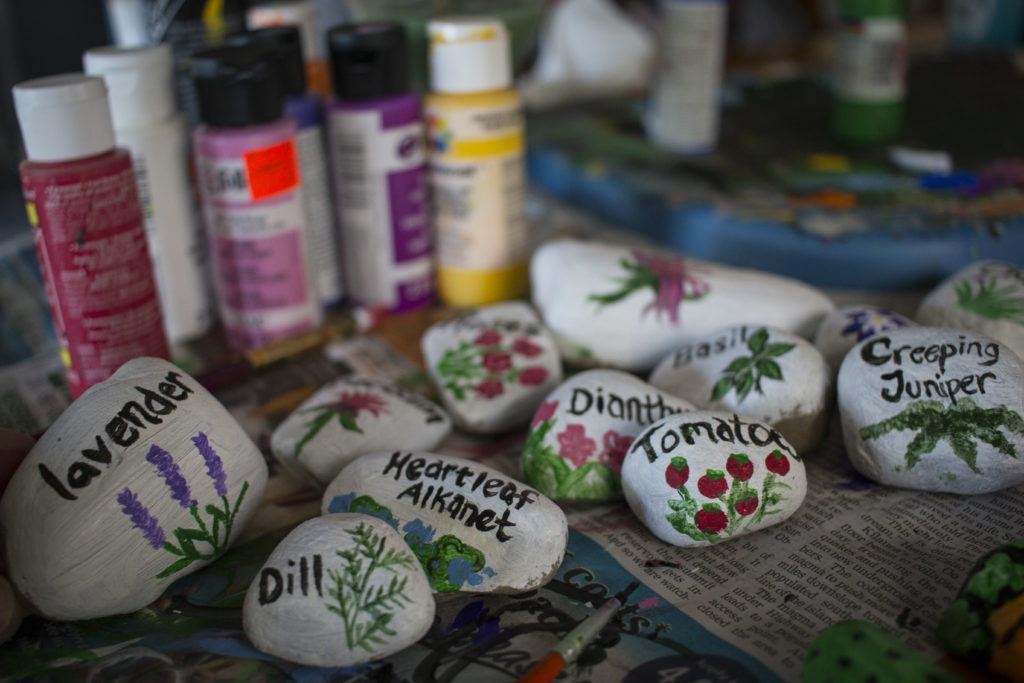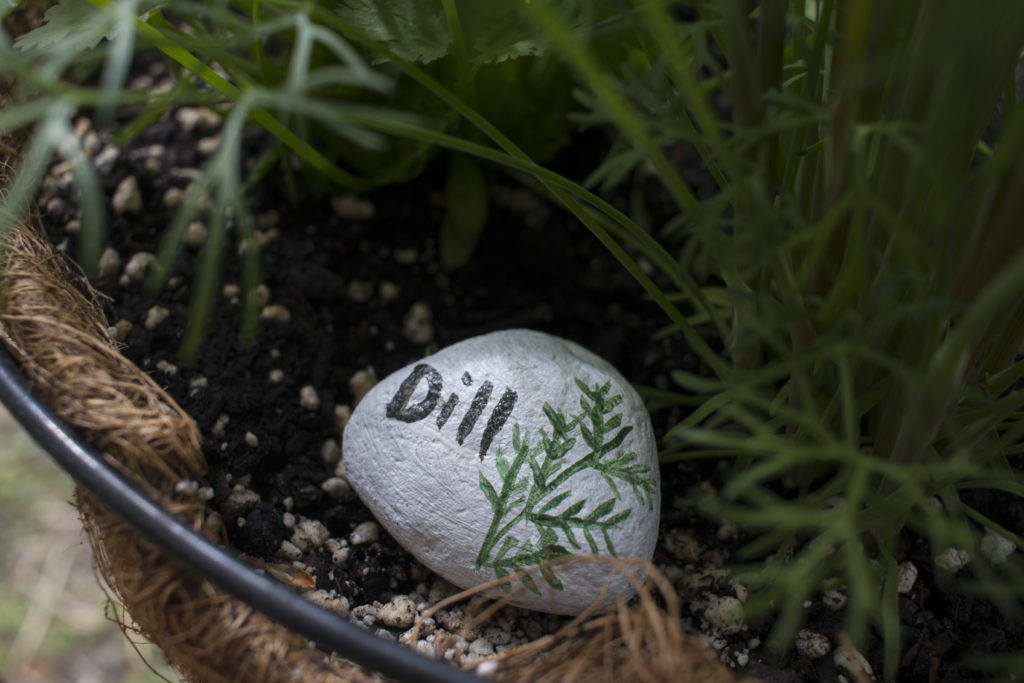DIY plant markers for your garden

I’ve upgraded my garden with DIY plant markers.
As a novice gardener, I have a tough time identifying plants and remembering what the heck I planted where. So each spring, as I clean out my flower beds and tiny herb and vegetable garden, I hem and haw over what I need to plant and where.
To help out, my husband often holds onto the little plastic plant ID markers — you know, the kind that come in the container with care instructions — and he sticks them in the mulch and soil beside the plants. The problem is, they’re a bit of an eyesore. I knew there had to be a better alternative, and I found it.
Materials you’ll need
There are oodles of fun ideas for making DIY plant markers floating around the internet, but I find that many of these projects require special materials, craft tools or crafting skills. I was looking for some a little more simple, using art materials readily available to me: paint and rocks.
For years now, I’ve been hoarding acrylic paint. I pick it up at yard sales, and I have any color you might want. The great thing about acrylic paint is that, once it dries, it’s water resistant, making it a good medium for creating crafts that will be going outdoors, in the rain.
And as for the rocks — I live in probably one of the rockiest forests in Maine.
The art of painting rocks
To start the project, I walked up and down the gravel road by my house and collected small rocks of various shapes. While I was doing this, my one and only neighbor quietly drove by. I imagine I looked quite strange standing there holding a bunch of dirty rocks as if they were treasures.
Back at home, I rinsed the rocks of dirt and laid them on a newspaper to dry. I then used a paintbrush to painted one side of each rock white. I decided to do this so that whatever illustrations or writing I painted would show up well.

Acrylic paint is great for this project because it won’t get washed away by the rain and it shows up well on rocks of any color. It’s also fairly kid-friendly, though certainly not edible. This craft would make for a wonderful family activity.
I experimented with the style of markers I wanted. At first, I painted entire rocks, transforming them into vegetables. I turned a round rock into a tomato and a triangular rock into a carrot, but I soon realized that it would be difficult to find rock shapes that worked for all the vegetables in my garden, let alone the herbs and flowers. So I changed the style.
Using a tiny brush, I illustrated the plants — to the best of my ability — on the white background of the rock, then wrote the name of the plant in small, black letters overhead. And I’ll admit, to do this, I Google searched illustrations of some of the plants to get a better idea of how to paint them.
In hindsight, I could have used a black sharpie to write the names of the plants instead, but it was actually very relaxing for me to focus so much on the small text and illustrations. I’ve always been someone who can get caught up in details, and for me, painting — like gardening — is therapeutic, even if my creations in both realms are far from masterpieces.
Now I’ve completed my first batch of plant marker rocks, I think I’ll make more, and maybe even bring the craft to my sister’s house to do with my 6-year-old niece.
If you’re not into painting, I found another great, easy DIY plant marker idea that doesn’t involve paint. You take old spoons, hammer them flat (which I imagine is a bit therapeutic in itself), and take tiny letter stamps and permanent ink (or marker) to create the plant names on the spoons.
